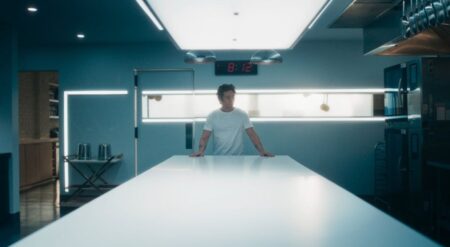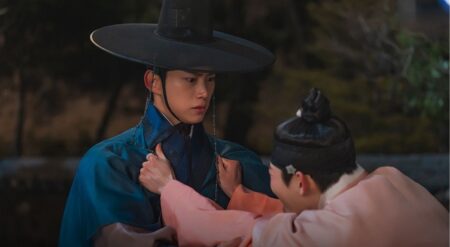
Tour de France: Unchained is the latest sports documentary available on Netflix. Directed by James Batten and produced by James Gay-Rees, Amelia Hann, Yann Le Bourboauch and Paul Martin, the documentary follows the teams and riders on the Tour de France, the world’s biggest bike race. From the start in Copenhagen to the finish line in Paris, the biggest wins and the worst losses are all captured with unprecedented access.
A fly-on-the-wall documentary cut from the same cloth as Formula 1: Drive To Survive and Full Swing, the structure is very similar. Each episode follows either one or two teams, with even more focus on one particular rider for the team. From the opening, the documentary does an excellent job of explaining the concept and format of the sport itself. Even though it is a globally famous event, there are likely many that don’t understand the intricacies of the sport. From how the teams work to the desire for the yellow jersey, these are elements that are crucial to be able to follow the series.
Tour de France: Unchained is excellent at deciding the flow of time within this series. It doesn’t follow ever stage, but it does unfold in a linear fashion. This helps keep track of where riders are in standings and keeps those storylines running quickly. It doesn’t take long to feel invested in the teams.
What makes a documentary like this successful is finding a character you can relate to and root for, even if you aren’t a diehard follower of the sport. And throughout the season, different figures are introduced. The variety of those included is broad. There are those that are seasoned veterans, such as Geraint Thomas, but are heading towards their final races in the sport. There are those in their first-ever Tour De France, coming to grips with the brutality and competitiveness of the race. There are the best in the world and those that are striving to stay relevant.

What is clear from early in the episodes is the way the show dictates who are the heroes and villains of the season. Perceptions of these people can be generated from the editing of the show. There is one rider in particular, Tadej Pogaĉar, who is depicted as nearly inhuman. This cements him as an incredibly formidable foe for those around him. Whilst there’s no direct sense of allegiance from the producers, you can tell they latch on to the Soudal Quick-Step, or “Wolf Pack.” No other team has that much focus in the episodes. It’s an example of how narratives can be constructed within documentaries for particular teams, whilst others are pushed to the wayside.
The documentary benefits from an elite production team. While not as glamorous a sport as Formula 1 or even golf, the precision and the intensity still need to be captured. These athletes travel well over a hundred kilometres per stage, at high speed, inches away from their competitors. The Netflix cameras brilliantly capture the strain and stress the races generate. The direction pivots from tight , closeup shots of the cyclists to wide shots that are pulled back to show the massive peloton. The extremely high definition shows the gorgeous surroundings in all their glory. The editing, whilst it leads to narratives being crafted, is unmatched when it comes to the races themselves.
The language within this documentary is worth mentioning. French is the primary language, it’s what the credits, commentary and general text is spoken in. But English is also commonly spoken too. It demonstrates the multi-lingual nature of the race and the series. A related shortcoming however is that the subtitles are slightly out of sync translating French to English, which can sometimes lead to confusion.
Tour de France: Unchained keeps the format strong. Gay-Rees and Netflix have found a formula they like and one that has been extremely successful. The Tour de France and cycling at that level were absolutely tailor-made for this concept. It’s an elite sport, containing athletes that are almost superhuman and a remit that is among the hardest in sports. Disciplines that contain this level of competition and speed and danger excel in documentary form. They’re exciting to begin with, accelerated by the fantastic cinematography and editing of a Netflix series.
It won’t take long to become a fan of bike racing from the series due to personalities within and footage captured. The formula can get tiresome if the series is viewed after Drive to Survive, Full Swing or even Break Point. The structure doesn’t differ much between the shows. But I actually think racing embraces that format more than other sports. The method in which various sports are presented to new and bigger audiences is beneficial for multiple parties.
Tour de France: Unchained is available now on Netlfix.
Tour de France: Unchained
-
Rating - 8.5/108.5/10
TL;DR
Tour de France: Unchained keeps the format strong. Gay-Rees and Netflix have found a formula they like and one that has been extremely successful.






